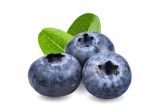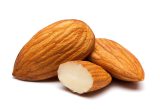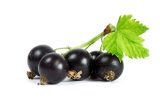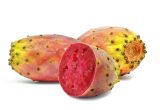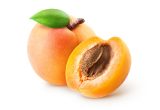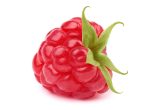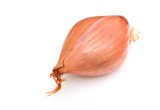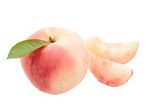Watermelon

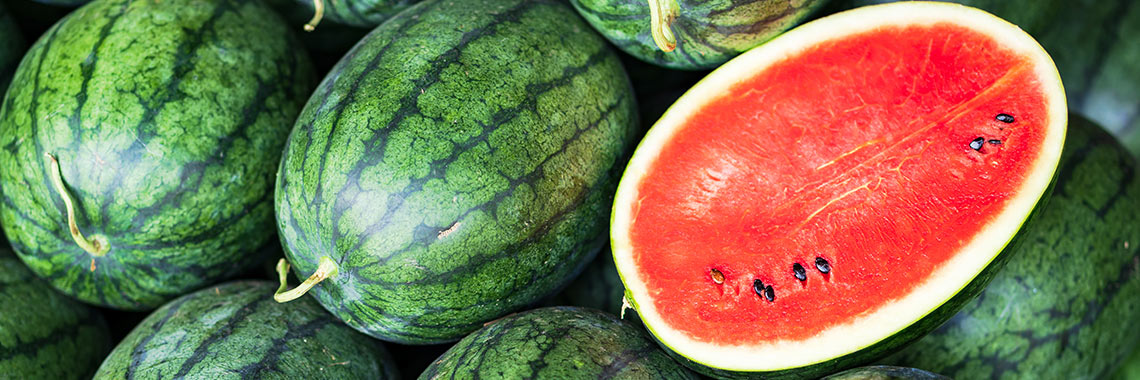
Description
- Watermelon (Citrullus lanatus) belongs to the Cucurbitaceae family.
PHYSICAL AND ORGANOLEPTIC CHARACTERISTICS
- During its development, watermelon undergoes significant changes including in size, colour, texture and aroma (Guo, 2011).
- Its flesh colour can be red, yellow or orange. Flesh colour variations are caused by the accumulation of carotenoid pigments such as lycopene (red), xanthophylls and β-carotene (yellow), and prolycopene and β-carotene (orange) (Subburaj, 2019).
- Lycopene is also a precursor of some volatile compounds involved in watermelon aroma (Ilahy, 2019).
- Lycopene concentration varies significantly with cultivar (Nagal, 2012).
- The colour and pattern of watermelon rind is green, ranging from a pale to a darker colour (Gusmini, 2006). It depends on the ripeness of the fruit: before it is ripe, it is white in colour and contains only traces of carotenoids (Ilahy, 2019).
- Thirty-two volatile compounds have been identified as being responsible for the odour of watermelon (Mendoza-Enano, 2019), the main ones being non-cyclic, such as: geranial, neral, 6-methyl-5-hepten-2-one, 2,6-dimethylhept-5-1-al, 2,3-epoxygeranial, (E,E)-pseudoionone, geranyl acetone and farnesyl acetone, derived from lycopene and other non-cyclic tetraterpenoids (Lewinsohn, 2005).
COMPOSITION CHARACTERISTICS (excluding macronutrients, vitamins and minerals)
- Lycopene, which constitutes 84-97% of the total carotenoids in red-fleshed watermelons, is thought to be involved in the prevention of cancers and cardiovascular diseases (Subburaj, 2019).
- Lycopene has anti-atherosclerotic, antioxidant, anti-inflammatory, antihypertensive and antiplatelet effects. It can reduce arterial stiffness and is believed to exert a favourable effect in patients with subclinical atherosclerosis, metabolic syndrome, hypertension, peripheral vascular disease, stroke and several other cardiovascular disorders (Mozos, 2018).
- Generally, carotenoids reduce the incidence of some age-related chronic pathologies by acting as antioxidants and/or via other molecular mechanisms such as promoting immune responses (Ilahy, 2019).
- Watermelon is rich in l-citrulline, an α-amino acid that may lower blood pressure (at rest and induced by stress) in adults with pre-hypertension (Allerton, 2018).
RAW
The following values are approximate and depend on variety, season, ripeness, cultivation conditions, etc. Watermelon is low in energy* as it provides an average of 38.90 calories (kcal) per 100 g, i.e. 165 kJ. According to the Ciqual 2020 table, watermelon is the 3rd lowest calorie fruit after lemon and strawberry.
COMPOSITION TABLES
For each nutrient, the tables provide information on the content, minimum and maximum values, as well as the percentage of Dietary Reference Values (DRVs) for 100 g net of watermelon.
*Regulation (EC) No 1924/2006 of the European Parliament and of the Council of 20 December 2006 on nutrition and health claims made on foods.
MACRONUTRIENTS
| Constituent (g) | Average content |
Min-Max per 100g |
DRV% |
|---|---|---|---|
| Water | 91 | 88 - 92,70 | - |
| Fibers | 0,50 | 0,30 - 0,80 | - |
| Carbohydrates | 8,33 | 7,38 - NC | 3,20 |
| Sugars | 7,90 | 5,74 - NC | 8,78 |
| Lipids | < 0,50 | 0,05 - NC | - |
| Saturated fat | < 0,01 | NC - 0,024 | - |
| Protein | 0,69 | 0,40 - 0,84 | 1,38 |
| Constituent (g) | Amount | Min-Max | DRV% |
|---|---|---|---|
| Water | Ciqual 2020 (valeur issue des analyses Ciqual-Aprifel 2017) | - | - |
| Fibers | Ciqual 2020 (valeur issue des analyses Ciqual-Aprifel 2017) | - | - |
| Carbohydrates | Ciqual 2020 | - | Règlement (UE) N°1169/2011 du parlement Européen et du conseil du 25 octobre 2011 |
| Sugars | Ciqual 2020 (valeur issue des analyses Ciqual-Aprifel 2017) | - | Règlement (UE) N°1169/2011 du parlement Européen et du conseil du 25 octobre 2011 |
| Lipids | Ciqual 2020 (valeur issue des analyses Ciqual-Aprifel 2017) | - | Règlement (UE) N°1169/2011 du parlement Européen et du conseil du 25 octobre 2011 |
| Saturated fat | Ciqual 2020 (valeur issue des analyses Ciqual-Aprifel 2017) | - | Règlement (UE) N°1169/2011 du parlement Européen et du conseil du 25 octobre 2011 |
| Protein | Ciqual 2020 (valeur issue des analyses Ciqual-Aprifel 2017) | - | Règlement (UE) N°1169/2011 du parlement Européen et du conseil du 25 octobre 2011 |
Zoom on carbohydrates
- The carbohydrate content of watermelon (8.33 g per 100 g) is lower than the average amount found in fresh fruit (11.31 g per 100 g).
- These are mainly fructose (3.60 g per 100 g), sucrose (2.50 g per 100 g) and glucose (1.80 g per 100 g).
Zoom on fibres
- Watermelon contains less fibre (0.50 g per 100 g) than the average amount found in fresh fruit (2.77 g per 100 g).
Zoom on lipids
- Watermelon is fat-free* as it contains less than 0.5 g per 100 g.
*Regulation (EC) No 1924/2006 of the European Parliament and of the Council of 20 December 2006 on nutrition and health claims made on foods.
MINERALS AND TRACE ELEMENTS
| Constituent | Average content |
Min-Max per 100g |
DRV% |
|---|---|---|---|
| Calcium (mg) | 6 | 3,37 - 14 | 0,75 |
| Chloride (mg) | < 20 | - | - |
| Copper (mg) | 0,03 | 0,006 - 0,17 | 3 |
| Iron (mg) | 0,16 | 0,08 - 0,55 | 1,14 |
| Iodine (µg) | < 20 | 0,02 - NC | - |
| Magnesium (mg) | 11 | 5 - 12 | 2,93 |
| Manganese (mg) | 0,02 | 0 - 0,08 | 1 |
| Phosphorus (mg) | 9,70 | 5 - 25,40 | 1,39 |
| Potassium (mg) | 100 | 58 - 191 | 5 |
| Selenium (µg) | < 20 | 0 - NC | - |
| Sodium (mg) | < 5 | 0 - 9,60 | - |
| Zinc (mg) | 0,09 | 0,04 - 0,63 | 0,90 |
| Constituent | Amount | Min-Max | DRV% |
|---|---|---|---|
| Calcium (mg) | Ciqual 2020 (valeur issue des analyses Ciqual-Aprifel 2017) | - | Règlement (UE) N°1169/2011 du parlement Européen et du conseil du 25 octobre 2011 |
| Chloride (mg) | Ciqual 2020 (valeur issue des analyses Ciqual-Aprifel 2017) | - | Règlement (UE) N°1169/2011 du parlement Européen et du conseil du 25 octobre 2011 |
| Copper (mg) | Ciqual 2020 (valeur issue des analyses Ciqual-Aprifel 2017) | - | Règlement (UE) N°1169/2011 du parlement Européen et du conseil du 25 octobre 2011 |
| Iron (mg) | Ciqual 2020 (valeur issue des analyses Ciqual-Aprifel 2017) | - | Règlement (UE) N°1169/2011 du parlement Européen et du conseil du 25 octobre 2011 |
| Iodine (µg) | Ciqual 2020 (valeur issue des analyses Ciqual-Aprifel 2017) | - | Règlement (UE) N°1169/2011 du parlement Européen et du conseil du 25 octobre 2011 |
| Magnesium (mg) | Ciqual 2020 (valeur issue des analyses Ciqual-Aprifel 2017) | - | Règlement (UE) N°1169/2011 du parlement Européen et du conseil du 25 octobre 2011 |
| Manganese (mg) | Ciqual 2020 (valeur issue des analyses Ciqual-Aprifel 2017) | - | Règlement (UE) N°1169/2011 du parlement Européen et du conseil du 25 octobre 2011 |
| Phosphorus (mg) | Ciqual 2020 (valeur issue des analyses Ciqual-Aprifel 2017) | - | Règlement (UE) N°1169/2011 du parlement Européen et du conseil du 25 octobre 2011 |
| Potassium (mg) | Ciqual 2020 (valeur issue des analyses Ciqual-Aprifel 2017) | - | Règlement (UE) N°1169/2011 du parlement Européen et du conseil du 25 octobre 2011 |
| Selenium (µg) | Ciqual 2020 (valeur issue des analyses Ciqual-Aprifel 2017) | - | Règlement (UE) N°1169/2011 du parlement Européen et du conseil du 25 octobre 2011 |
| Sodium (mg) | Ciqual 2020 (valeur issue des analyses Ciqual-Aprifel 2017) | - | - |
| Zinc (mg) | Ciqual 2020 (valeur issue des analyses Ciqual-Aprifel 2017) | - | Règlement (UE) N°1169/2011 du parlement Européen et du conseil du 25 octobre 2011 |
Zoom on minerals and trace elements
- Watermelon provides the equivalent of 5% of DRVs for potassium, i.e. 100 mg per 100 g.
- The amount of other minerals and trace elements is less than 4% of DRVs.
VITAMINS
| Constituent | Average content |
Min-Max per 100g |
DRV% |
|---|---|---|---|
| Provitamin A Beta-carotene (µg) | 1 220 | 184 - NC | - |
| Vitamin A equivalent (µg) | 203,33 | 30,67 - NC | 25,42 |
| Vitamin B1 (mg) | 0,015 | NC - 0,046 | 1,36 |
| Vitamin B2 (mg) | < 0,01 | 0,01 - 0,036 | 0,71 |
| Vitamin B3 (mg) | 0,30 | 0,11 - NC | 1,88 |
| Vitamin B5 (mg) | 0,20 | 0,15 - 0,33 | 3,33 |
| Vitamin B6 (mg) | 0,064 | 0,033 - 0,065 | 4,57 |
| Vitamin B9 (µg) | 36,90 | 1,70 - NC | 18,45 |
| Vitamin C (mg) | 4,26 | NC - 14,70 | 5,33 |
| Vitamin E (mg) | < 0,08 | 0,02 - NC | - |
| Vitamin K1 (µg) | < 0,80 | 0 - NC | - |
| Constituent | Amount | Min-Max | DRV% |
|---|---|---|---|
| Provitamin A Beta-carotene (µg) | Ciqual 2020 (valeur issue des analyses Ciqual-Aprifel 2017) | - | - |
| Vitamin A equivalent (µg) | Calcul à partir de la valeur Provitamine A Béta-carotène* | - | Règlement (UE) N°1169/2011 du parlement Européen et du conseil du 25 octobre 2011 |
| Vitamin B1 (mg) | Ciqual 2020 (valeur issue des analyses Ciqual-Aprifel 2017) | - | Règlement (UE) N°1169/2011 du parlement Européen et du conseil du 25 octobre 2011 |
| Vitamin B2 (mg) | Ciqual 2020 (valeur issue des analyses Ciqual-Aprifel 2017) | - | Règlement (UE) N°1169/2011 du parlement Européen et du conseil du 25 octobre 2011 |
| Vitamin B3 (mg) | Ciqual 2020 (valeur issue des analyses Ciqual-Aprifel 2017) | - | Règlement (UE) N°1169/2011 du parlement Européen et du conseil du 25 octobre 2011 |
| Vitamin B5 (mg) | Ciqual 2020 (valeur issue des analyses Ciqual-Aprifel 2017) | - | Règlement (UE) N°1169/2011 du parlement Européen et du conseil du 25 octobre 2011 |
| Vitamin B6 (mg) | Ciqual 2020 (valeur issue des analyses Ciqual-Aprifel 2017) | - | Règlement (UE) N°1169/2011 du parlement Européen et du conseil du 25 octobre 2011 |
| Vitamin B9 (µg) | Ciqual 2020 (valeur issue des analyses Ciqual-Aprifel 2017) | - | Règlement (UE) N°1169/2011 du parlement Européen, et du conseil du 25 octobre 2011 |
| Vitamin C (mg) | Ciqual 2020 (valeur issue des analyses Ciqual-Aprifel 2017) | - | Règlement (UE) N°1169/2011 du parlement Européen et du conseil du 25 octobre 2011 |
| Vitamin E (mg) | Ciqual 2020 | - | Règlement (UE) N°1169/2011 du parlement Européen et du conseil du 25 octobre 2011 |
| Vitamin K1 (µg) | Ciqual 2020 (valeur issue des analyses Ciqual-Aprifel 2017) | - | Règlement (UE) N°1169/2011 du parlement Européen et du conseil du 25 octobre 2011 |
Zoom on vitamins
- Watermelon is a source of vitamin A and vitamin B9 as it provides the equivalent of:
- 25.42% of DRVs for vitamin A, i.e. 203.33 µg per 100 g. According to the Ciqual 2020 table, watermelon is the 3rd fruit, after melon and apricot, to contain the most vitamin A.
- 18.45% of DRVs for vitamin B9, i.e. 36.90 µg per 100 g.
- The quantity of other vitamins represents less than 6% of DRVs.
*Calculation made: Beta-Carotene / 6 + retinol
POLYPHENOLS
| Constituent (mg) | Average content |
Min-Max per 100mg |
|---|---|---|
| Flavonoids (mg) | 1,84 | - |
| of which Flavones (mg) | 1,84 | - |
| Lignanes (mg) | 0,086 | - |
| Total polyphenols | 1,93 | - |
| Constituent (mg) | Amount | Min-Max |
|---|---|---|
| Flavonoids | Phénol-Explorer version 3.6 Méthode utilisée : Chromatographie après hydrolyse | - |
| of which Flavones | Phénol-Explorer version 3.6 Méthode utilisée : Chromatographie après hydrolyse | - |
| Lignanes | Phénol-Explorer version 3.6 Méthode utilisée : Chromatographie après hydrolyse | - |
| Total polyphenols | Phénol-Explorer version 3.6 Méthode utilisée : Chromatographie après hydrolyse | - |
Zoom on polyphenols
- Polyphenols are substances with an antioxidant effect.
- Flavones, a subgroup of flavonoids, are the major polyphenols present in watermelon, representing 95.53% of the total polyphenols identified.
- Next come lignans, which represent 4.47% of total polyphenols.
Nutrition and health claims
According to the definitions of nutrition claims as presented in Regulation (EC) No 1924/2006 on nutrition and health claims, and in view of the composition of raw watermelon, the following claims may be used:
NUTRITION CLAIMS OF WATERMELON
- Low in energy (100 g of watermelon bring less than 40 kcal)
- Fat-free (100 g of watermelon contain less than 0.5 g of fat)
- Source of vitamin A (100 g of watermelon provide more than 15% of DRVs)
- Source of vitamin B9 (100 g of watermelon provide more than 15% of DRVs)
HEALTH CLAIMS (for a consumption of 100 g of watermelon)
Vitamin A
- Vitamin A has a role in the process of cell specialisation.
- Vitamin A contributes to:
- maintenance of normal skin,
- maintenance of normal mucous membranes,
- maintenance of normal vision,
- normal iron metabolism,
- normal function of the immune system.
Folates or vitamin B9
- Folates contribute to:
- maternal tissue growth during pregnancy,
- normal amino acid synthesis,
- normal blood formation,
- normal homocysteine metabolism,
- normal psychological function,
- normal function of the immune system,
- reduction of tiredness and fatigue.
- Folates have a role in the process of cell division.
References
- Agence nationale de sécurité sanitaire de l’alimentation, de l’environnement et du travail. Table de composition nutritionnelle des aliments Ciqual 2020. Consultée le 14/08/2020 depuis le site internet Ciqual https://ciqual.anses.fr/
- Allerton TD, Proctor DN, Stephens JM, Dugas TR, Spielmann G, Irving BA. l-Citrulline Supplementation: Impact on Cardiometabolic Health. Nutrients. 2018;10(7): 921.
- Guo S, Liu J, Zheng Y, Huang M, Zhang H, Gong G, He H, Ren Y, Zhong S, Fei Z, Xu Y. Characterization of transcriptome dynamics during watermelon fruit development: sequencing, assembly, annotation and gene expression profiles. BMC Genomics. 2011;12:454.
- Gusmini G, Wehner TC. Qualitative inheritance of rind pattern and flesh color in watermelon. J Hered. 2006;97(2):177-85.
- Ilahy R, Tlili I, Siddiqui MW, Hdider C, Lenucci MS. Inside and Beyond Color: Comparative Overview of Functional Quality of Tomato and Watermelon Fruits. Frontiers in Plant Science. 2019;10: 769.
- Lewinsohn E, Sitrit Y, Bar E, Azulay Y, Meir A, Zamir D, Tadmor Y. Carotenoid pigmentation affects the volatile composition of tomato and watermelon fruits, as revealed by comparative genetic analyses. J Agric Food Chem. 2005;53(8):3142-8.
- Mendoza-Enano ML, Stanley R, Frank D. Dataset of volatile compounds in fresh and stored cut watermelon (Citrullus lanatus) under varying processing and packaging conditions. Data in Brief. 2019;26:104299.
- Mozos I, Stoian D, Caraba A, Malainer C, Horbańczuk JO, Atanasov AG. Lycopene and Vascular Health. Frontiers in Pharmacologyl. 2018;9:521.
- Nagal S, Kaur C, Choudhary H, Singh J, Bhushan Singh B, Singh KN. Lycopene content, antioxidant capacity and colour attributes of selected watermelon (Citrullus lanatus (Thunb.) Mansfeld) cultivars grown in India. Int J Food Sci Nutr. 2012;63(8):996-1000.
- Neveu V, Perez-Jiménez J, Vos F, Crespy V, du Chaffaut L, Mennen L, Knox C, Eisner R, Cruz J, Wishart D, Scalbert A. (2010) Phenol-Explorer: an online comprehensive database on polyphenol contents in foods. Database, doi: 10.1093/database/bap024. Full text (free access)
- Règlement (CE) N° 1924/2006 du Parlement européen et du Conseil du 20 décembre 2006 concernant les allégations nutritionnelles et de santé portant sur les denrées alimentaires.
- Règlement (UE) N°432/2012 de la Commission du 16 mai 2012 établissant une liste des allégations de santé autorisées portant sur les denrées alimentaires, autres que celles faisant référence à la réduction du risque de maladie ainsi qu’au développement et à la santé infantiles.
- Règlement (UE) n°1169/2011 du Parlement européen et du Conseil du 25 octobre 2011 concernant l’information des consommateurs sur les denrées alimentaires, modifiant les règlements (CE) n°1924/2006 et (CE) n°1925/2006 du Parlement européen et de Conseil et abrogeant la directive 87/250/CEE de la Commission, la directive 90/496/CEE du Conseil, la directive 1999/10/CE de la Commission, la directive 200/13/CE du Parlement européen et du Conseil, les directives 2002/67/CE et 2008/5/CE de la Commission et le règlement (CE) n°608/2004 de la Commission.
- Subburaj S, Lee K, Jeon Y, Tu L, Son G, Choi S, et al. Whole genome resequencing of watermelons to identify single nucleotide polymorphisms related to flesh color and lycopene content. PLoS ONE. 2019;14(10): e0223441.




